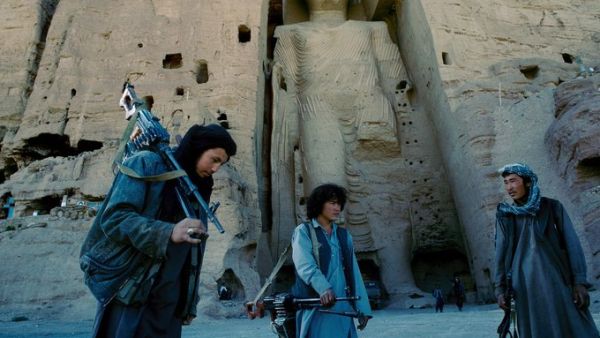The UN cultural agency called for the protection of Afghanistan’s cultural heritage and to ensure a safe environment for artists, days after the Taliban swept to power in Kabul.
Afghanistan is home to two Unesco World Heritage sites, including the Bamiyan Valley, where the Taliban blew up two giant Buddha statues.
History
— Afghanistan (@Afghanistan_n19) August 25, 2021
The ancient sandstone carvings in #Afghanistan's #Bamiyan valley were once the world's tallest Buddhas - but they were lost when the #Taliban blew them up. @AdityaRajKaul#TalibanDestroyingAfghanistan pic.twitter.com/oOPhodUWZD
UNESCO early this year marked 20 years of the destruction of the Bamiyan Buddhas. After the destruction, all that remains are empty niches—and memories.
“The tragic destruction of the Buddhas of Bamiyan in March 2001, which was broadcast across the globe, led to a global recognition of the need to protect cultural heritage at risk," UNESCO.
UNESCO said Afghanistan’s diverse heritage and cultural sites were an integral part of Afghan history and identity and of importance for humanity as a whole.
UNESCO also recalled the "deliberate destruction" of the renowned Bamiyan Buddhas, a world heritage site in Afghanistan's Bamiyan Valley, in 2001 in a statement.#Afghanistan #Kabul #Talibans #UNESCO #budhhasofbamiyanhttps://t.co/sSRGaJNlN3
— The Policy Times (@thepolicytimes) August 20, 2021
UNESCO statement and tweeted:
"We are calling for the preservation of Afganisthan cultural heritage in its diversity, in full respect of international law, and for taking all necessary precautions to spare and protect cultural heritage from damage and looting."
This includes the Old City of Herat, the UNESCO world heritage sites of the Minaret and the archaeological remains of Jam, and the cultural landscape and archaeological remains of the Bamiyan Valley.
My heart shatters to see and talk to Afghan artists who have started destroying their own art out of fear. #Afghanistan is becoming black and white again. It’s losing its beauty, diversity and colors. I am afraid the world will let this happen again! pic.twitter.com/XSKA0To7BJ
— Omaid H. Sharifi-امید حفیظه شریفی (@OmaidSharifi) August 26, 2021
"Any damage or loss of cultural heritage will only have adverse consequences on the prospects for lasting peace and humanitarian relief for the people of Afghanistan."
The Buddhas of Bamiyan were two 6th-century monumental statues of Vairocana Buddha and Gautama Buddha carved into the side of a cliff in the Bamyan valley of central Afghanistan, 130 kilometers northwest of Kabul at an elevation of 2,500 meters.
Those days many Afghan artists already have started destroying their own art out of fear. Afghanistan is becoming black and white again. It’s losing its beauty, diversity, and colors.







